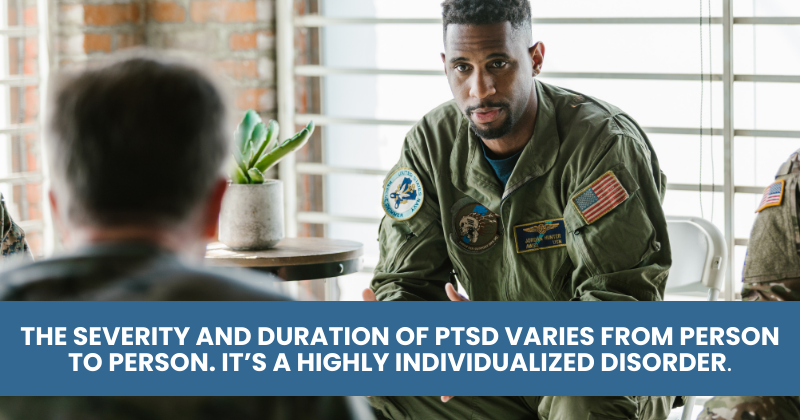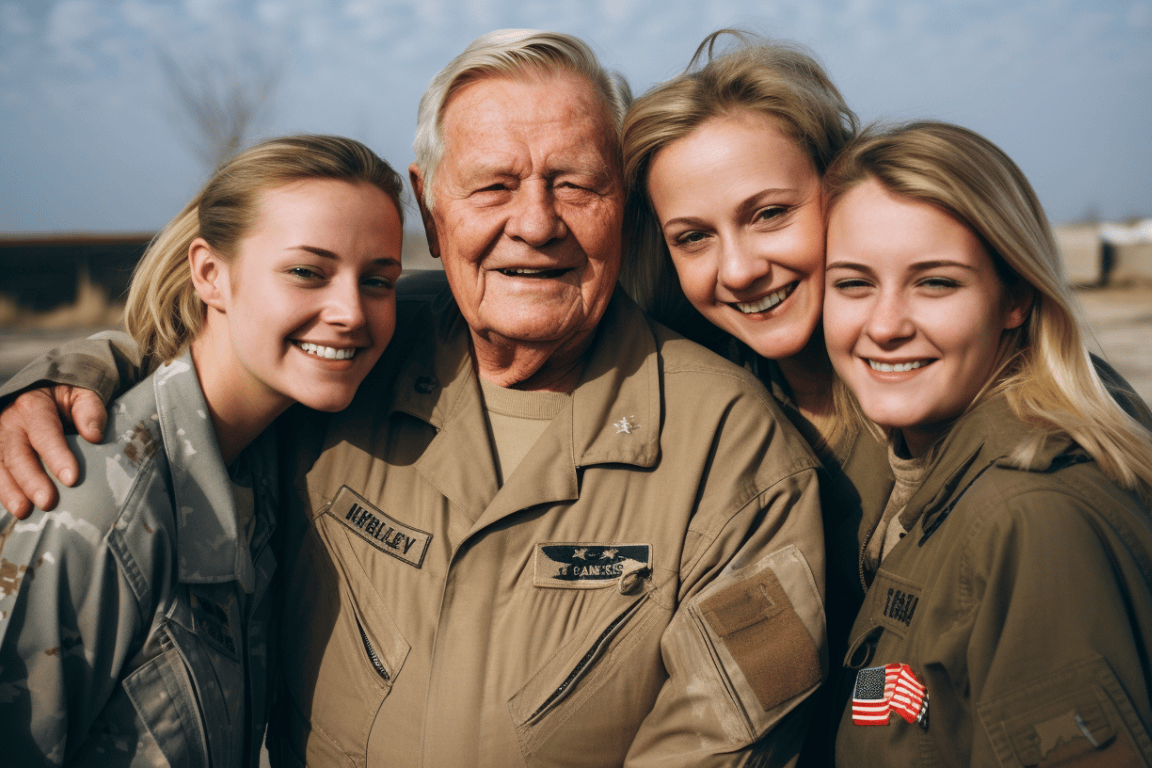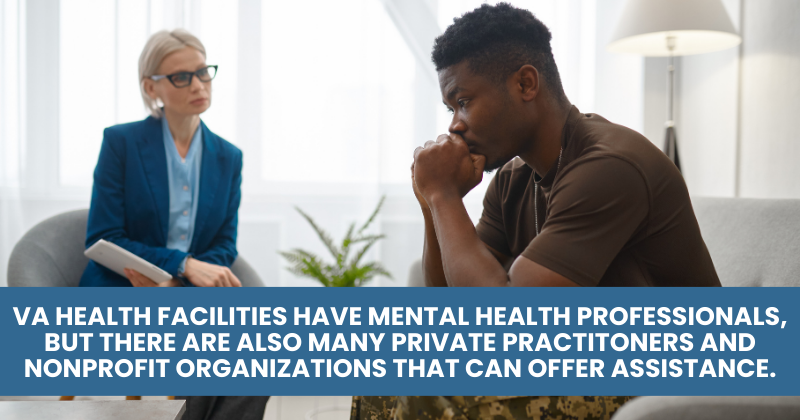The Integral Role of Family Therapy in Supporting Veterans with PTSD
- Baltimore Therapy Center

- Jul 5, 2023
- 6 min read
Updated: Oct 25
When service members return from duty, they often carry a lot more than what they began with. For many, the heavy burden of post-traumatic stress disorder (PTSD) has a profound effect not only on the veterans themselves but also on the lives of their families and friends. Navigating the journey back to civilian life can be challenging, and it is especially complex when coupled with the invisible wounds of war.
PTSD is a severe and debilitating condition that can develop after a person has experienced or witnessed a traumatic event. For military veterans, these experiences may include combat exposure, military sexual trauma, or other life-threatening situations often faced during service.

The prevalence of PTSD among veterans is alarmingly high. According to the U.S. Department of Veterans Affairs (VA), about 11-20 out of every 100 veterans who served in operations Iraqi Freedom and Enduring Freedom have PTSD in a given year. The symptoms can make daily life a constant challenge and may significantly impact relationships, leading to a ripple effect that extends beyond the individual veteran to their family members and loved ones.
As veterans’ families are often on the front lines in coping with the effects of their loved one struggling with PTSD, their involvement in the treatment process is often critical. The exploration of different therapy methods, benefits, and ways to initiate therapy can serve as a guide for those seeking to navigate the healing process.
Understanding PTSD in Veterans
PTSD is characterized by intense, disturbing thoughts and feelings related to their experience that last long after the event has ended. The person may relive the event through flashbacks or nightmares, they may feel sadness, fear, or anger, and they may feel detached or estranged from other people.
People with PTSD may have strong reactions to something as ordinary as a loud noise or an accidental touch, reflecting the fight or flight response typically associated with danger. Additionally, they may avoid situations or people that remind them of the traumatic event, including social situations.
In the case of veterans, PTSD can occur as a result of exposure to death, threatened death, actual or threatened serious injury, or actual or threatened sexual violence during their military service. This could include exposure to combat, being held as a prisoner of war (POW), or military sexual trauma (MST).
It’s important to remember that not all veterans who experience traumatic events will develop PTSD. Some may experience symptoms soon after the trauma, while others might not see symptoms until years after the event. The severity and duration of PTSD also vary from person to person. It’s a highly individualized disorder that’s shaped by an interplay of the nature of the traumatic events, the individual’s mental and physical health history, and their social support.
Methods of Family Therapy for PTSD
Family therapy involves treating more than one member of the family at the same time to help the family resolve conflicts and improve interaction. It is often based on the premise that families are a unique social system with their own structure and patterns of communication. These patterns are determined by many things, including the parents’ beliefs and values, the personalities of all family members, and the influence of the extended family (grandparents, aunts, uncles, step-family, etc.) As such, changes in one member caused by PTSD can affect the whole system.
Cognitive Behavioral Conjoint Therapy (CBCT) for PTSD
Cognitive Behavioral Conjoint Therapy (CBCT) is a type of therapy that treats PTSD in the context of a romantic relationship. This therapy approach assumes that PTSD symptoms affect the relationship and that the relationship impacts the PTSD symptoms. The goal of CBCT is to improve both PTSD symptoms and relationship satisfaction.
In CBCT, both the veteran and their partner attend therapy sessions together. During these sessions, they learn how to communicate their thoughts, feelings, and needs more effectively. The therapist guides the couple through exercises to help them understand how PTSD affects their relationship and how they can work together to manage the symptoms.
Research has shown that CBCT can significantly reduce PTSD symptoms, enhance relationship satisfaction and improve the overall quality of life for veterans and their partners.
Structural Family Therapy (SFT)
Structural Family Therapy (SFT) is another therapeutic approach that can be particularly useful for veterans with PTSD and their families. This type of therapy identifies patterns within the family structure that may contribute to the veteran’s PTSD symptoms or interfere with their recovery process.
SFT views the family as a system with its own hierarchy and rules. When a member of the system changes (for example, a veteran developing PTSD), it can disrupt the balance and function of the whole system. This type of therapy focuses on strengthening the family system to make it more supportive and less stressful for the veteran.
Therapists working with the SFT model will help family members to understand each other’s experiences and perspectives better, foster open and empathetic communication, encourage problem-solving, and cultivate a supportive environment for the veteran’s recovery.
Benefits of Family Therapy for Veterans

Family therapy is more than just a series of conversations–it’s a transformative process that can lead to profound changes in the lives of veterans with PTSD and their families. Below are some key benefits that can arise from engaging in family therapy.
#1. Improved Communication and Understanding
One of the primary benefits of family therapy is improved communication. As veterans and their family members work together with a therapist, they have the opportunity to express their thoughts, emotions, fears, and desires in a safe and supportive environment. The therapist can help facilitate these conversations and ensure that everyone’s voice is heard. This can lead to a greater understanding of the veteran’s experience and the impact of PTSD on the family, which can, in turn, strengthen relationships and promote healing.
#2. Reduced Symptoms and Improved Coping Strategies
Family therapy can also contribute to a reduction in PTSD symptoms and the development of healthy coping strategies. In methods like Cognitive Behavioral Conjoint Therapy (CBCT), veterans and their partners learn new skills to manage PTSD symptoms and deal with conflict. As a result, veterans may see reductions in flashbacks, nightmares, and emotional distress. Simultaneously, family members learn how to better support their loved ones and manage their own stress related to the situation.
#3. Strengthened Family Bonds and Increased Support
Through the therapy process, families can grow closer and strengthen their bonds. The shared experience of therapy can build empathy, mutual respect, and understanding. As they work through challenges together, families can become more resilient and supportive of one another.
Additionally, family therapy often helps to normalize the experiences of the veteran, reducing feelings of isolation or stigma. It can also validate the experiences of family members who may be feeling the secondary effects of the veteran’s PTSD.
#4. Improved Overall Quality of Life
Ultimately, the primary goal of family therapy is to improve the overall quality of life for veterans and their families. Through therapy, families can learn to navigate the challenges of PTSD together, strengthening their relationships and promoting emotional well-being. With increased understanding and effective coping strategies, families can begin to move forward and focus on building a fulfilling life post-service.
How Families Can Initiate Therapy

The first step toward initiating family therapy for veterans with PTSD is recognizing and acknowledging the need for help. This is by far the most critical step because nothing else can progress otherwise. Veterans may struggle with the idea of needing therapy due to stigmas surrounding mental health and perceived expectations of strength and resilience. Family members themselves may also struggle with feelings of uncertainty or helplessness. Recognizing signs of PTSD and understanding how it can impact not only the veteran but also the entire family is an important first step.
Seeking Professional Help
Once the need for therapy is recognized, the next step is seeking professional help. It’s important to find a mental health professional who specializes in family therapy and has experience working with veterans and PTSD. Veterans Affairs (VA) health facilities often have such professionals, but there are also many private practitioners and nonprofit organizations that can offer assistance.
The process of seeking therapy involves discussing the idea with the veteran and other family members involved. Honesty, openness, and empathy are important during these conversations. Understanding that it may take time for everyone to agree to therapy and patience is critical during this process.
In the journey to recovery from PTSD, family therapy plays an invaluable role. The shared experience of therapy can bring families together and improve communication, understanding, and mutual support. With the help of professional therapists, veterans, and their families can learn to manage PTSD symptoms effectively and work towards a healthier, happier life together.




Comments